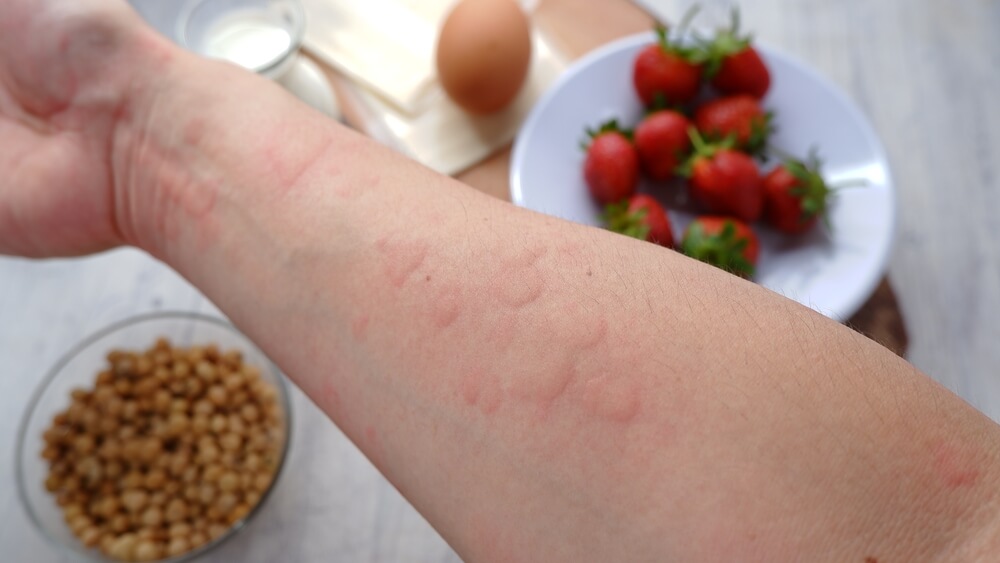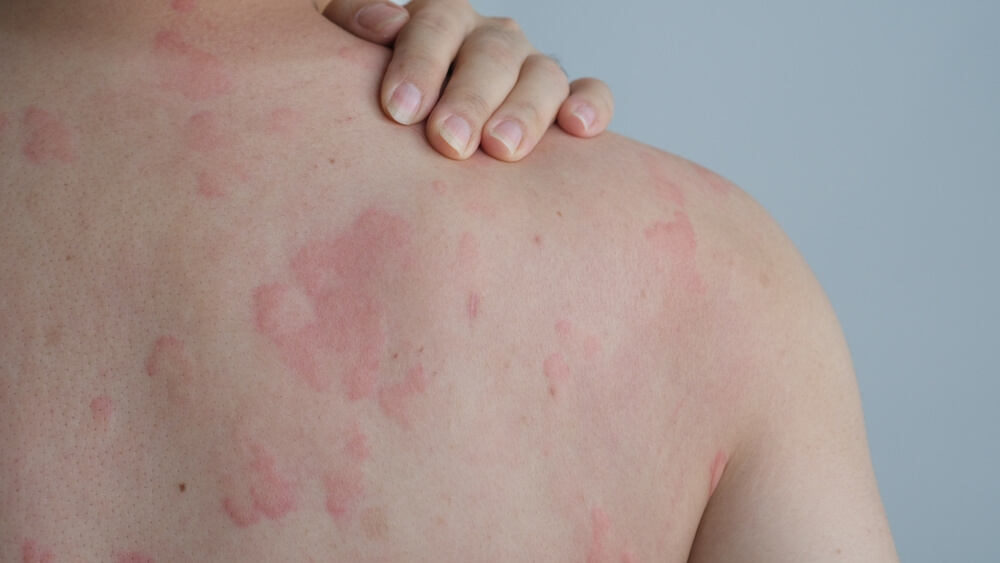Hives, also known as urticaria, are a common and bothersome skin condition characterized by the sudden appearance of itchy, red welts on the skin. These raised lesions can vary in size, shape, and duration, often causing discomfort and distress to those affected. Hives can appear anywhere on the body and are typically accompanied by itching and inflammation.
Understanding the underlying causes, identifying triggers, and exploring effective treatment options are crucial for managing and alleviating the symptoms associated with hives. This article provides a comprehensive overview of hives, delving into their causes, symptoms, different types, and available treatment approaches.
By shedding light on the intricacies of this condition, individuals can gain valuable insights into the management and prevention of hives, leading to improved overall well-being and a better quality of life. If you need medical help dealing with this condition, come to Allergy and Immunology Center and let experts give you a hand.
What are Hives?
Though many assume they know everything about them, discovering what hives are is where you should start learning. Hives are itchy, red, or pink welts that can vary in size and shape. They often appear suddenly and may disappear within hours or persist for days. Hives can occur anywhere on the body and are caused by an inflammatory response in the skin. The welts are usually raised and surrounded by a slightly pale area known as a flare.
What Causes Hives?
Hives can be triggered by a wide range of factors. Here’s what causes hives in most cases:
- Allergies: Allergic reactions to certain foods, medications, insect bites, or environmental allergens such as pollen or pet dander can cause allergy hives.
- Physical Triggers: Hives can be induced by physical stimuli like pressure, cold, heat, sunlight, or friction on the skin.
- Infections: Some viral or bacterial infections can lead to the development of hives.
- Underlying Medical Conditions: Hives can be associated with underlying health conditions such as autoimmune disorders, thyroid disease, or chronic infections.
- Stress and Emotional Factors: Emotional stress or heightened emotional states can sometimes trigger hives.

Who is at Risk?
Anyone can develop hives, but certain factors may increase the risk, including:
- History of Allergies: Individuals with a history of allergies, asthma, or other allergic conditions are more prone to developing hives.
- Family History: A family history of hives or other allergic conditions can increase the risk.
- Certain Medical Conditions: People with autoimmune disorders, thyroid disease, or chronic infections may be more susceptible to hives.
- Medications: Some medications, such as antibiotics or nonsteroidal anti-inflammatory drugs (NSAIDs), can trigger hives in susceptible individuals.
What do Hives Look Like?
Hives typically appear as raised, itchy welts on the skin. They can vary in size and shape and may merge together to form larger areas of swelling. The welts are usually accompanied by redness and are surrounded by a slightly pale area. The appearance of hives can be different for each individual and may change over time.
Types of Hives
There are different types of hives, including:
- Allergic Hives: These allergy hives are triggered by an allergic reaction to substances such as food, medication, or insect stings.
- Physical Hives: Physical triggers like pressure, cold, heat, or sunlight can cause these hives. They may appear on areas of the body exposed to the trigger.
- Idiopathic Hives: Idiopathic hives have an unknown cause and may persist for months or even years.
- Chronic Hives: If hives last for more than six weeks, they are considered chronic hives. The cause of chronic hives is often difficult to determine.
Symptoms of Hives
Common symptoms of hives include:
- Intense itching: One of the hallmark symptoms of hives is severe itching, which can be distressing and lead to scratching, further exacerbating the condition. The itching sensation is often localized to the affected areas of the skin.
- Red or pink welts on the skin: Hives typically manifest as raised, red or pink welts, also known as wheals or hives. These lesions can appear in various sizes and shapes, ranging from tiny dots to larger patches, and may merge together to form larger areas of swelling.
- Swelling of the affected areas: The welts associated with hives are often accompanied by localized swelling. This swelling can cause discomfort and a feeling of tightness in the affected areas, such as the face, hands, feet, or other parts of the body.
- Raised bumps or plaques on the skin: The appearance of hives is characterized by raised bumps or plaques on the skin. These raised areas are distinct from the surrounding skin and can be palpable when touched.
- Skin that is warm to the touch: Along with redness and swelling, the skin affected by hives may feel warm or slightly elevated in temperature compared to the surrounding areas. This increased warmth is a result of the underlying inflammatory response.
- Burning or stinging sensation: Some individuals with hives may experience a burning or stinging sensation in the affected areas. This sensation can add to the discomfort and may be more pronounced during acute episodes of hives.

Treatment Options
Treatment for hives aims to relieve symptoms and prevent recurrences. Depending on the severity and underlying cause, treatment options may include:
- Antihistamines: Antihistamines, available over-the-counter or as prescribed medications, are commonly used to alleviate itching, reduce inflammation, and minimize the frequency of hives. They work by blocking the effects of histamine, a chemical released during an allergic reaction.
- Corticosteroids: In more severe cases of hives, oral or injectable corticosteroids may be recommended. These powerful anti-inflammatory medications help suppress the immune response, reduce swelling, and provide relief from persistent or widespread hives.
- Avoiding Triggers: Identifying and avoiding triggers that precipitate hives is an essential aspect of management. By keeping a record of potential triggers and making lifestyle adjustments accordingly, individuals can minimize the occurrence of hives. This may involve avoiding certain foods, medications, or environmental factors that have been identified as triggers.
- Cool Compresses and Topical Treatments: Applying cool compresses to the affected areas or using soothing lotions or creams can help alleviate itching and reduce inflammation associated with hives. These measures provide temporary relief and promote comfort.
- Stress Management: Stress and emotional factors can contribute to the development and exacerbation of hives. Incorporating stress management techniques, such as relaxation exercises, mindfulness, or therapy, can aid in reducing the frequency and severity of hives triggered by emotional stress.
- Medical Evaluation and Allergy Testing: In cases of chronic hives or when an underlying medical condition is suspected, a comprehensive medical evaluation may be necessary. This can involve allergy testing, blood work, or other diagnostic procedures to identify hives’ root causes and effectively guide treatment decisions.
Conclusion
Hives are a common skin condition characterized by itchy, red welts that can appear suddenly and disappear within hours or persist for days. Allergies, physical stimuli, infections, or underlying medical conditions can trigger them. Understanding the causes, symptoms, and available treatment options for hives can help individuals manage the condition effectively and improve their quality of life. If you are experiencing hives or persistent skin reactions, it is recommended to consult with a healthcare professional for proper diagnosis and personalized treatment.


